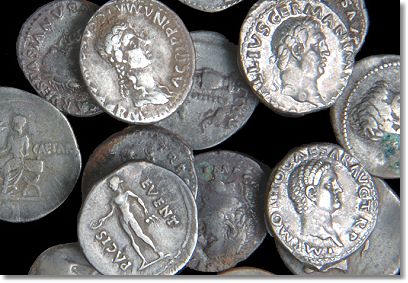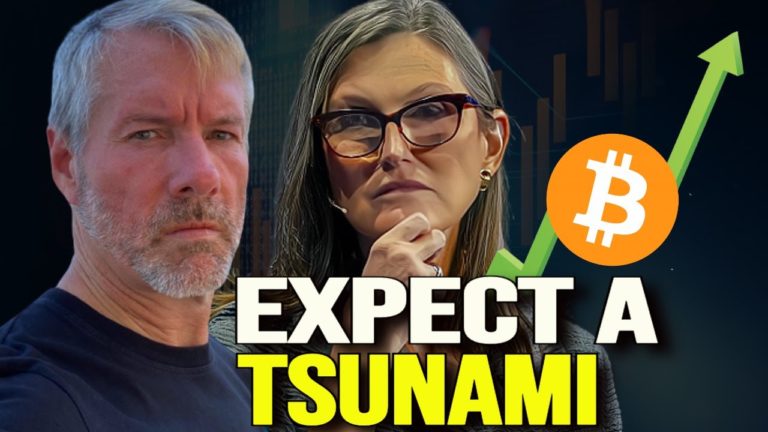In a recent Michael Saylor interview, the question was raised: What if governments take part in printing fiat for Bitcoin? Though the answer was briefly explored in the interview, there is plenty more to consider. And it goes beyond only governments. It extends to corporations and traders as well.
Let’s start with how MicroStrategy generates Bitcoin with fiat.
Here’s how it works: MicroStrategy, lead by its CEO Michael Saylor, issues additional MicroStrategy stock to raise US dollars. Those US dollars are then used buy Bitcoin and added to the company’s treasury.
This has been a highly successful strategy for MicroStrategy’s stock price. The stock has surged since it began accumulating Bitcoin, rising from below $100 a share in March of 2020 to as high as $1,318 at its peak, and then settling around $555 currently. Investors buy MicroStrategy stock for the sole purpose of having exposure to Bitcoin’s upside.

El Salvador is already experimenting with the same strategy on the governmental level; El Salvador issued bonds in own currency, then bought Bitcoin with the capital raised.
Also, it has been speculated that many of the underlying assets supporting Tether are, in fact, Bitcoin itself. This is due to exchanges are allowing traders to leverage their Tether holdings to buy Bitcoin on margin. In essence, it is just another way of printing fiat for Bitcoin. They are using Bitcoin as collateral for lending.
These practices certainly have risks associated with them. But in the grand course of currency evolution, the practice of printing fiat for Bitcoin may turn out to be a windfall. But not without major risks for your average retail investor.
Just like fiat currency, Bitcoin is faith-backed; and unlike fiat, it is not tied to any country, rather… Bitcoin is backed by the People’s faith in Bitcoin itself: its stability and security enabled through cryptography running on a decentralized network. In other words, Bitcoin is a mathematically secured currency, insusceptible to hacks and manipulation by centralized powers.
With Bitcoin, instead of being supported by a Keynesian economic model where government currency intervention is necessary to maintain stability (this is through many forms of money printing) … the Bitcoin supply is fixed at 21 million. It cannot be manipulated; it cannot be printed.
With Bitcoin, instead of having a currency built on a trust model—where costly third-party middlemen must custody, create, and provide insurance for its affiliated currency—Bitcoin is exchanged peer-to-peer, person-to-person, without an authoritative, surveilling middleman, such as a government or a corporation.
And with Bitcoin, instead of being a currency that must strive to maintain dominance through trade wars (or even outright wars) … Bitcoin is peaceful, borderless, and without ties to a single entity, country, company, or person. Bitcoin is decentralized.
People generally believe in US dollars because it’s secured by the strength of the United States, its assets, and its influence. But US dollars and other fiat currencies are state-driven monies, dependent on centralized banks and the politics of their leaders. State-driven money requires an expenditure of effort and energy to subsist: Be it through their supportive banking infrastructure, trade wars, or the need of a military to back its presence, or even the need for propaganda and marketing to uphold good-standing with other nations that their currency is traded with… point is, without constant maintenance, a nation’s fiat currency could fall by the wayside. This is the old model of money.
Now, with decentralized crypto, nationalism will no longer need to be tied to a single currency. Through the separation of currency and state, nations do not have to vie for currency dominance or survival. They could adopt crypto instead and enter the modernized version of peer-to-peer economics, driven by grass roots exchange.

This is not outlandish. Historically, silver was traded throughout the world in many fiefdoms. Even shavings of silver or gold were used for trade. But eventually, the minting of coins representative of the king, and later of states, tied silver and gold to national interests. This led to kings and states minting silver coins, but devaluing the silver coins by medaling less valuable metals into the coin (since it was difficult for merchants to discover the impure metals inside of the coins, the People were being robbed by kings and states).
Today, state actors achieve similar results. But instead of mixing cheap metals into the silver coins, they need only increase the money supply through excessive stimulus, quantitative easing, and interest rate controls. The resulting inflation (and even hyperinflation) is a new kind of theft, which is carried out by the machinery of central bank money printing.
Thus, decentralized cryptocurrency is more than a march toward peace. It is an escape from an economic model gamed by central banks and state actors.
But only the truly decentralized cryptocurrencies with the best protocols will succeed. People will vote with their wealth, their hard-earned assets, and buy crypto with open-sourced, decentralized protocols best suited to their needs. People will eventually choose crypto because it is an advancement. Less secure and expensive transaction types, such as wires, ACH payments, and credit cards will be replaced by to cryptographically secured, peer-to-peer payment systems from one digital wallet to another.
People will also choose to transact within crypto networks because they desire financial privacy. The currency of today’s centralized banking systems monitors our account activity daily. Over the years, regulations such at the Bank Secrecy, AML rules, and the Patriot Act have given our government free reign to monitor our banking activity to seek out criminals. But there are other means to catch criminal behavior. It is governmental overreach to mandate that our accounts and electronic transactions be monitored.
Yes, people will ultimately choose decentralized, peaceful crypto over manipulated, bordered, and permissioned fiat.
Thus, we are in the beginning stages of a massive wealth redistribution out of fiat and into crypto. There will be a rush to escape the throes of fiat. And as people begin to realize that crypto is the evolution of money, and that fiat is dying a death by a 1,000 cuts… small governments, soothsaying corporations, and individuals will find creative ways to obtain more crypto.
They will borrow, margin, and leverage fiat for crypto. And as they are printing fiat for Bitcoin, wealth redistribution will accelerate.
Other small governments, following El Salvador, who are impacted by inflation and hyperinflation, will likely be the first nations to print fiat for Bitcoin. And these governments will prosper by this effort. The Bitcoin assets that they will hold will strengthen them and their corresponding currencies; they will reap great rewards for their courage and foresight.
Companies will follow suit as well. Just like Michael Saylor from MicroStrategy, investing in cryptocurrency will be a way to strengthen their corporate balance sheets and take part in the future of money and exchange. During the internet gold rush, companies had to invest in internet infrastructure and talent to take part in the information revolution. This time around, call it the crypto economic revolution, companies will only need to choose truly decentralized crypto and add it to their treasury vaults. Again, it will be the early adopters who chose their crypto wisely that will benefit the most.
Larger governments that do not add Bitcoin to their balance sheets will suffer greatly. Their constant increases in money supply will continue to add to their debt and devalue their currency. Since larger governments will unlikely be adding Bitcoin to their treasuries, their respective currencies will continue on a downward spiral of devaluation.
People have their own risks to consider during this transition. During the 2016 and 2017 crypto bull market, some retail traders borrowed off their homes to buy crypto. When the crypto markets collapsed, people who took part in such risky practices suffered the most. Governments and large companies have the capital and staying power to last through a crypto winter. Most people, however, do not have such wealth and fortitude to survive a bear market on leveraged crypto.
HODLing through a crypto winter is no easy task and volatility could be gut-wrenching. Unfortunately, unless their timing is lucky, the everyday person with limited means will not be able to survive through a crypto bear market on borrowed crypto. Therefore, it is best for such a person to only invest what they could afford to lose, and to spend time learning about crypto… find ways to incorporate crypto into their daily lives. So, if you fall into this category, it is best to become crypto savvy, and prepare for the new crypto economy; yes, own crypto, but seek out its utility and function. And be extremely careful about leveraging your assets as a means to buy crypto… this is a dangerous practice.
Over time, the mad dash into crypto will restructure the world’s economic order.
Owning crypto is a choice based on reason. And when the supportive reasons for stashing Bitcoin outweigh the reasons for saving fiat, people’s mindsets will change; they will choose crypto over fiat. Thus, cryptocurrencies will burgeon from their mathematical roots and spread. The Cypherpunk visions surrounding crypto will then become reality. I believe this multi-decadal event is inevitable; it is humanity’s best option for economic peace and stability; it’s the most prosperous and productive choice for businesses. But most importantly, it’s every individuals’ chance at wealth sovereignty, and independence from central bank currency manipulation. It is our best road toward economic deliverance.







1 thought on “Printing Fiat for Bitcoin”
Good idea, but some crypto companies do manage and control their programs. I think that crypto can find decentralization throughout, but it will take Integrity in the users of bitcoin to bring true financal Freedom for all.